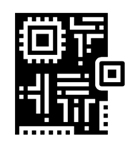

Electronics comprises the physics, engineering, technology, and applications that deal
with the emission, flow, and control of electrons in vacuum and matter. It uses active devices to
control electron flow by amplification and rectification, which distinguishes it from classical
electrical engineering which uses passive effects such as resistance, capacitance, and inductance to
control current flow.
The study of semiconductor devices and related technology is considered a branch of solid-state physics,
whereas the design and construction of electronic circuits to solve practical problems come under
electronics engineering. Electronics is widely used in information processing, telecommunication, and
signal processing. Interconnection technologies such as circuit boards, electronics packaging
technology, and other varied forms of communication infrastructure complete circuit functionality and
transform the mixed electronic components into a regular working system, called an electronic system;
examples are computers or control systems. The electronics discipline deals with electrical circuits
that involve active electrical components such as vacuum tubes, transistors, diodes, integrated
circuits, optoelectronics, and sensors, associated passive electrical components, and interconnection
technologies. An electronic system may be a component of another engineered system or a standalone
device.


CerebroX Solutions for Universities, Polytechnic Schools, and Vocational
Training
We offer a number of solutions for the study of electronics engineering. Our products can cover
everything from introductory experiments to specialized studies; please contact us directly for a
consultation on what products in our portfolio best suit your needs.